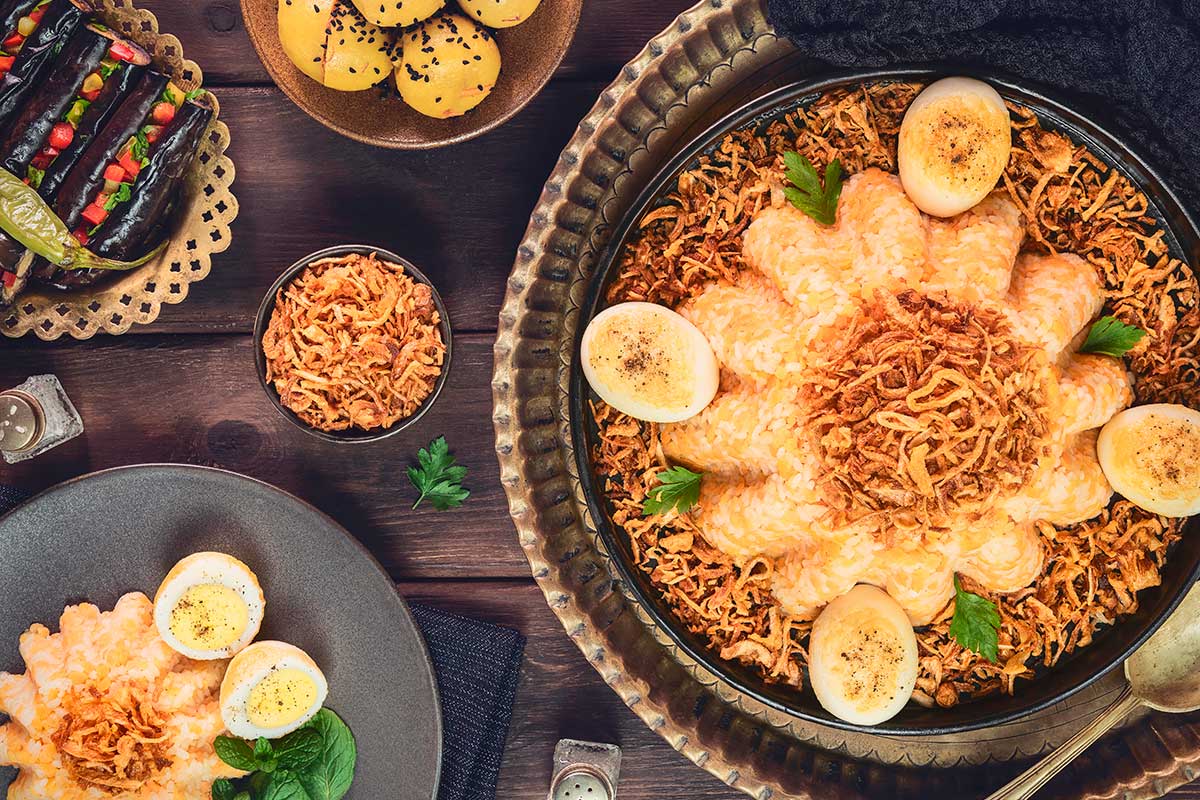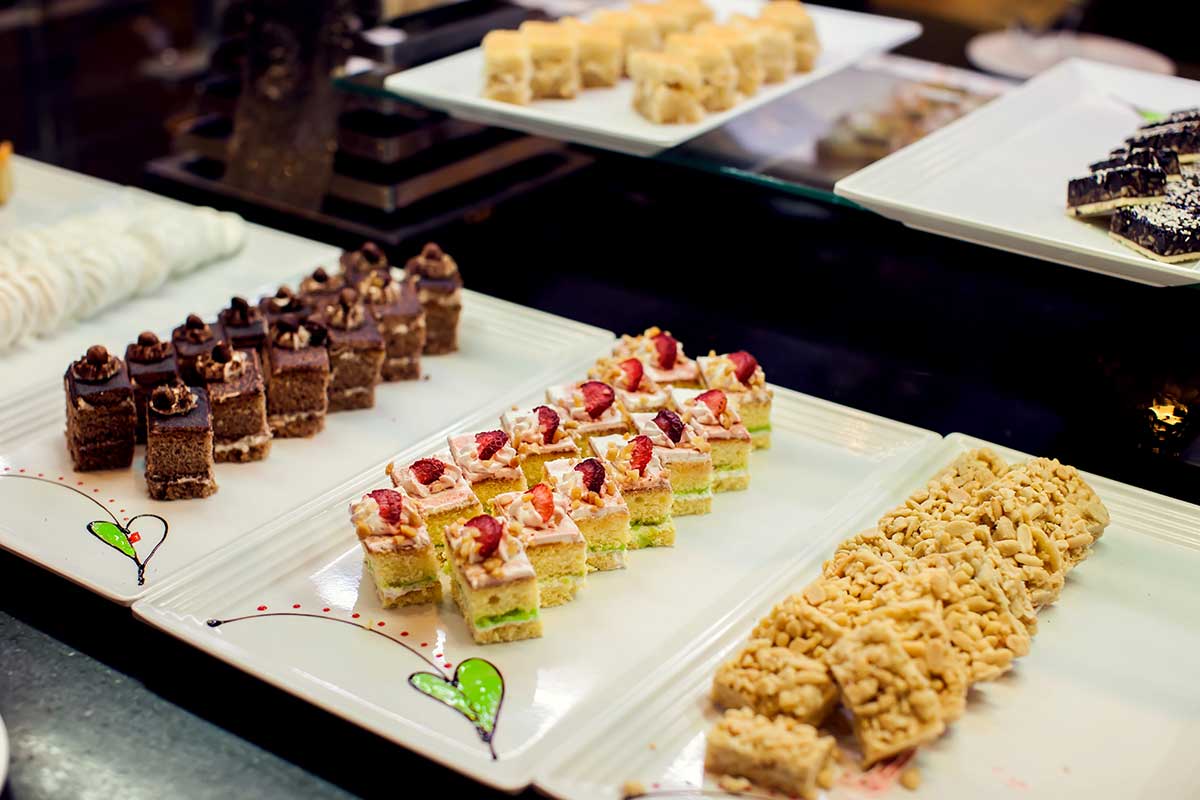In recent years, the culinary scene has become a major factor in choosing a travel destination, and Egypt is no exception. Its cuisine boasts a rich and diverse array of flavors that will surely delight food enthusiasts. On this page, we introduce you to the distinctive characteristics of typical Egyptian cuisine, highlighting its key ingredients, signature dishes, sweets, and drinks. Whether you crave traditional recipes or contemporary creations, our agency can help you discover top-quality restaurants that cater to your tastes. Get ready to embark on a delicious journey through the flavors of Egypt!
Egyptian cuisine is a rich blend of cultural influences shaped by its history and geography. The Mediterranean diet has contributed to some northern influences, while the southern parts reflect African cuisine. The Ottoman rule also had a significant impact on Egyptian dishes. Additionally, the customs and traditions of Islam, especially concerning permitted foods, have influenced Egyptian gastronomy.
One of the defining characteristics of Egyptian food is the heavy emphasis on vegetables in the diet. Meat is relatively expensive and mainly used in stews or ground with vegetables.
In contrast, fish and seafood are not dominant in the diet of Egyptians, despite being popular in the pharaonic era. Lake Nasser’s tilapia is a delicious exception, but fish is mostly found in coastal cities like Alexandria and Sharm El Sheikh, where it is fully ingrained in the locals’ diet.
In Egypt, gastronomy is enjoyed in moderation, as opposed to excess, with Egyptians not typically consuming large quantities of food when sitting at the table. This frugality can be attributed to a variety of reasons, some of which date back to Ancient Egypt, where a significant portion of the available food was reserved for feeding the ka of the deceased, as evidenced by numerous tomb findings from that period.
Other reasons are more current and practical, such as the desert climate, which doesn’t encourage overeating. As anyone who lives in a place with a noticeable difference between winter and summer can attest, the body demands less food during the summer season since it doesn’t need as much energy to produce heat, reducing appetite.
As we mentioned, vegetables play a prominent role in their gastronomy, with beans or fava beans being widely used and cooked in various ways such as stewed, roasted, mashed, seasoned, or in soup. Eggplants, peppers, tomatoes, cucumbers, and other vegetables are also very popular and commonly used in salads.
Cereals, especially rice, are widely used as a garnish in many dishes. Wheat is another essential ingredient in the Egyptian diet, and bread is practically a staple in any menu.
Fruit, especially citrus fruits, holds a prominent place in typical Egyptian cuisine, and fruit juices are a common way to consume it. Olive oil is a popular option for dressing salads and frying.
When it comes to meat, lamb and beef are the preferred options in a diet where pork is not consumed due to Islamic precepts. Chicken is the most commonly consumed poultry, but pigeon is also highly regarded and often roasted and stuffed with vegetables and rice.
In places where fish and seafood are abundant, there are a variety of species that make it to the plate. In the Mediterranean, squid, shrimp, mullet, sea bass, and bream are among the most common. And in the Red Sea, lobster is one of its most outstanding proposals.

If you’re planning to try different specialties of typical Egyptian cuisine during your trip, here are some proposals that you cannot miss:
In addition to these typical dishes of Egypt, there are many others that are common in neighboring countries but no less popular. Kebab is a standout, which is lamb skewered and grilled over an open flame. Tabouleh, a salad common in Egypt and Middle Eastern cuisine in general, also stands out. Its most common ingredients include parsley, tomato, lemon, garlic, sesame seeds, and bulgur, which are cooked wheat grains similar to couscous.

Egyptian cuisine places great importance on sweets and desserts, which are commonly served at the end of a meal. One popular dessert is ruz bi laban, which is a creamy rice pudding. Another sweet treat is mahallabiye, a type of custard made with almonds and pine nuts. Baklava is another classic Egyptian dessert that is made from layers of phyllo dough, which are filled with a mixture of chopped nuts (usually walnuts and pistachios) and sweetened with syrup. Konafa is a sweet pastry that is very popular during Ramadan. It is made from shredded phyllo dough that is layered with sweetened cheese or cream and nuts (such as pistachios or almonds), and then baked until golden brown.
Egyptian cuisine is not complete without its refreshing and unique drinks. Among the most popular are Arabic tea and coffee, which are also part of the country’s culture of hospitality. Tea, known as shai, can be served with leaves or in a teabag. Coffee, called ahwa or Turkish coffee, is a thick, strong coffee served in small cups with sediment at the bottom.
Hibiscus tea, or carcade, is another common infusion in Egypt, which can be served hot in the winter or with ice in the summer. Sahlab, a milk-based drink with powders or pieces of dried tubers, nuts, and cinnamon, is also a favorite.
Juices are another staple in Egyptian cuisine, and a great way to beat the heat. You can find them with banana, guava, mango, pomegranate, strawberry, orange, and many other fruits in street-level establishments.
It’s important to note that, as in most Muslim countries, alcohol is not allowed in Egypt, but can be found in tourist-oriented establishments, particularly beers. However, it is not acceptable to drink on the street or show signs of drunkenness.
If you need advice on where to find the best drinks or how to navigate food and beverage customs in Egypt, Egipto Exclusivo can assist you with restaurant reservations and cultural experiences.
Fill out the form below to receive a free, no-obligation, tailor-made quote from an agency specialized in Egypt.
Travel agency and DMC specializing in private and tailor-made trips to Egypt.
Mandala Tours, S.L, NIF: B51037471
License: C.I.AN-187782-3